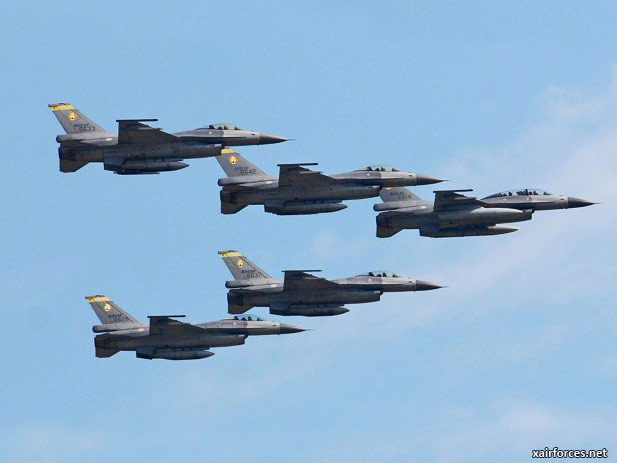
Taipei cuts budget for F-16 upgrades

With less money than is needed to acquire everything released by the US in September, Taiwan’s air force will have to make some tough choices.
The Executive Yuan is only giving the Ministry of National Defense US$3.7 billion for the upgrade of the nation’s ageing F-16 aircraft, the Taipei Times has learned. As a result of that decision, the ministry has told the air force that it cannot afford to spend US$5.1 billion on the upgrade package, notified to US Congress in September last year, for its 145 F-16A/Bs.
The Times was also informed that a decision has been made not to replace the aircraft’s F-100-PW-220 engines with F-100-PW-229, work that would have cost an estimated US$1.35 billion.
The air force is currently negotiating with US contractors and trying to determine whether to upgrade fewer aircraft or to limit the items included in the upgrades. Consensus on the best possible plan has yet to be reached.
According to a source close to the negotiations, two scenarios are emerging. The first would involve the upgrade of all 145 F-16A/Bs, but to a lesser standard than that proposed in the Sept. 21 notification, or with smaller quantities of armaments.
Although Washington has yet to commit to selling Taiwan the more advanced F-16C/D, the upgrade included an impressive array of advanced weapons systems, including 176 Active Electronically Scanned Array (AESA) radars; 176 Embedded Global Positioning System Inertial Navigation Systems; 176 ALQ-213 Electronic Warfare Management systems; 140 AIM-9X Sidewinder missiles; 16 GBU-31V1 Joint Direct Attack Munitions (JDAM) kits; 80 GBU-38 JDAM kits; and Dual Mode/ Global Positioning System Laser-Guided Bombs — 16 GBU-10 Enhanced PAVEWAY IIs or GBU-56 Laser JDAM, 80 GBU-12 Enhanced PAVEWAY IIs or GBU-54 Laser JDAMs, and 16 GBU-24 Enhanced PAVEWAY IIIs.
The second — and reportedly likeliest — scenario would involve a modest upgrade for only a number of aircraft, with potential for a second round in future. Initial estimates for the upgrade of all 145 aircraft put it at 10 years, a period during which the air force is expected to retire the obsolete F-5 and a number of Mirage 2000s.
Lockheed Martin Corp, the maker of the F-16, appears to be regarded by the air force as the only candidate to perform the avionics upgrades and weapons systems integration, despite a stipulation by the legislature that to ensure the proper use of government public resources, the Letter of Agreement (LOA) for the upgrade package — which is expected to be signed in April — should not specify any supplier and must request that the US team perform an open competition.
BAE Systems is competing with Lockheed for the upgrade, in many ways similar to the one for Taiwan, of 135 KF-16C/Ds for the South Korean air force. Seoul is expected to announce its decision in May or June.
Given that lowering costs appears to be the main consideration for the ministry, industry sources argue that rather than rush into signing the LOA in April and cut back on acquisitions of much-needed weapons to fit the US$3.7 billion mould, Taipei could benefit from waiting to see the outcome of the bidding process in South Korea, which could lead to reduced costs.
Representatives from Lockheed and Raytheon Corp, the other major contractor in the upgrade program and maker of the AESA radar, were unavailable for comment yesterday.
Source: By J. Michael Cole / Staff Reporter, 10 February 2012 - The Taipei Times News (www.taipeitimes.com)
Photo: Taiwan Air Force F-16 Fighter Aircraft (Photo by http://overseaskachinassociation21.blogspot.com)
(11.02.2012)
|